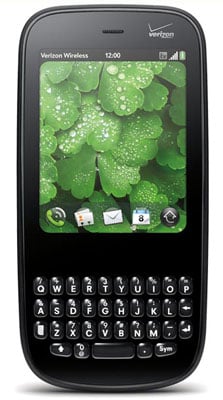You know you're in trouble when your revenue is $1bn less than you'd expected for the year. But a few companies might envy being in Palm's position. It has an excellent product it can't sell, and in webOS an asset that wealthy rivals - Nokia, Samsung or Microsoft - would pick up in a snap.
Palm itself blamed a lacklustre rollout with Verizon, and said it's taken steps to address it. In a letter to employees former Apple hardware boss Jon Rubenstein wrote: "[Verizon] acknowledged that their execution of our launch was below expectations and recommitted to working with us to improve sales."
What can rescue the Pre, then? All is far from lost, since it's still early days. In fact, the 2009 shortfall was more predictable than shocking. After wowing critics with a 'better iPhone than the iPhone', Palm chose to launch with a marginal, cash-strapped carrier, Sprint. Since Sprint is fourth in the marketplace and committed to WiMax for 4G, this is a barking mad decision that few outside Intel HQ expect to turn out well. Only in the autumn did Palm go to market with a significant US partner, in the shape of Verizon. And Verizon now admits it ballsed it up.
Add O2 to Palm's coalition of the apathetic. Bloggers have noticed how its site renders it invisible, and Carphone's isn't much help either. Palm isn't listed as one of its suppliers in the main navigation (where the potential punter can opt for Apple, BlackBerry, Nokia, and others). A few of O2's own stores have Palm Pre models on display. O2 insists that sales are good but won't give out figures.

Palm Pre Pixi:
still pretty nerdy
Usually three things are identified when a company gets its forecast so badly wrong. It needs to make the product better, it has its go-to-market strategy wrong, or else it's not promoting the phone adequately. Which is it here?
Well, the latter is blindingly obvious, for a start. In the UK, this outstanding phone has been lost in the noise. The UK market now has lots of cheap but perfectly serviceable touchscreen phones, by Samsung and LG, from which to choose. Operators are carpet bombing us with Android devices, which come and go, but are well promoted. While they're visible, they're very visible, but the all-conquering Apple and Blackberry call all before them.
Palm's chief asset remains webOS, and it needs to realise that asset. Palm's webOS can go into a lot more different kinds of devices. In the US, the company appears to have made the conservative BlackBerry-style keyboard mandatory. This isn't necessary in Europe - where sliders and pure touchscreens have sold well. In Europe too, it should make more of the well established operators' subsidies that Apple has done so much to upset. It may need more low cost (the Pixi is now $79 on Sprint). If you're in the business of selling phones, go and sell some phones.
Much of the US ad spend has been spent on very expensive and pointless 'rebranding' ads, allowing Motorola and Verizon to go aggressively head-to-head with the iPhone. Check out this - although you'll probably wish you hadn't.
Expensive and pointless, and saying what exactly?
A phone is just a tool, and it can be a useful tool. When I first saw the Pre, in launch week in DC, I thought it had got so much right, in many ways what the iPhone should have been, and made Nokia's S60 edition look prehistoric. Surely success was assured.
Maybe Palm thought something similar, too, and believed the market would beat a path to its door, simply because it wasn't Apple. It knows it's in a fight now. ®
